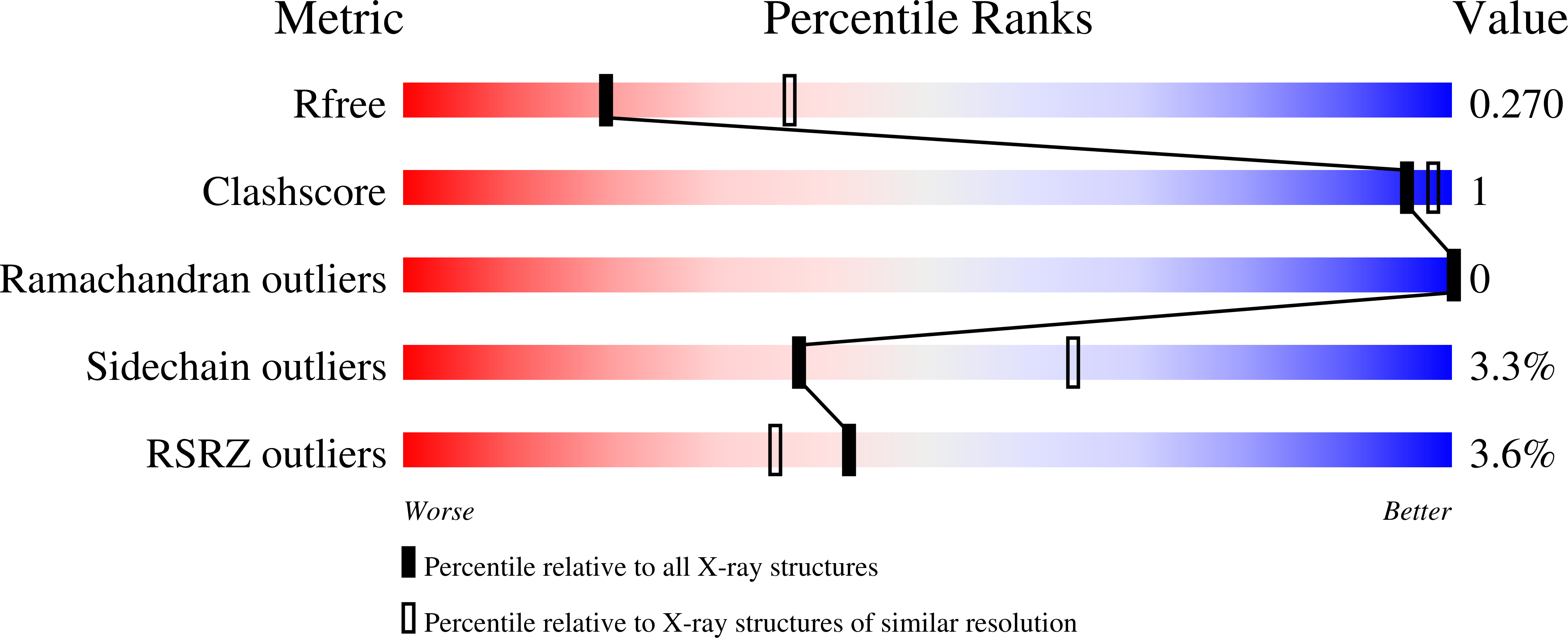Double mimicry evades tRNA synthetase editing by toxic vegetable-sourced non-proteinogenic amino acid.
Song, Y., Zhou, H., Vo, M.N., Shi, Y., Nawaz, M.H., Vargas-Rodriguez, O., Diedrich, J.K., Yates, J.R., Kishi, S., Musier-Forsyth, K., Schimmel, P.(2017) Nat Commun 8: 2281-2281
- PubMed: 29273753
- DOI: https://doi.org/10.1038/s41467-017-02201-z
- Primary Citation of Related Structures:
5V58, 5V59 - PubMed Abstract:
Hundreds of non-proteinogenic (np) amino acids (AA) are found in plants and can in principle enter human protein synthesis through foods. While aminoacyl-tRNA synthetase (AARS) editing potentially provides a mechanism to reject np AAs, some have pathological associations. Co-crystal structures show that vegetable-sourced azetidine-2-carboxylic acid (Aze), a dual mimic of proline and alanine, is activated by both human prolyl- and alanyl-tRNA synthetases. However, it inserts into proteins as proline, with toxic consequences in vivo. Thus, dual mimicry increases odds for mistranslation through evasion of one but not both tRNA synthetase editing systems.
Organizational Affiliation:
The Scripps Laboratories for tRNA Synthetase Research and the Department of Molecular Medicine, The Skaggs Institute for Chemical Biology, The Scripps Research Institute, 92037, La Jolla, CA, USA.
















